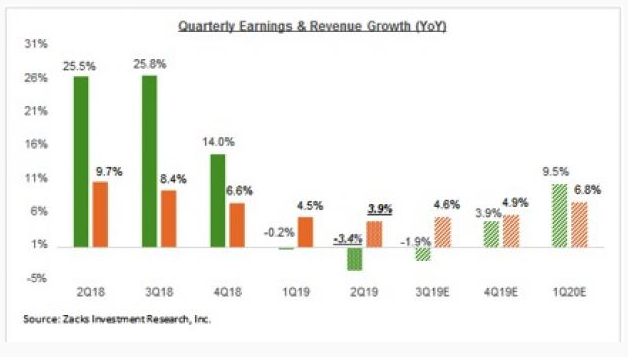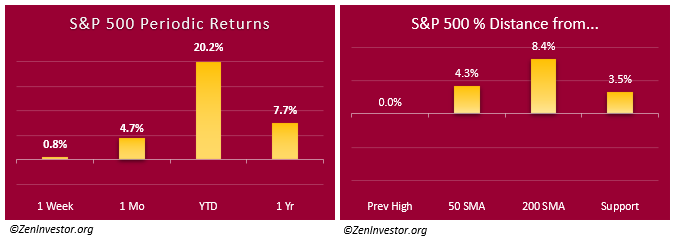What happened last week.
What we're watching for next week.
The S&P 500 finally broke through the arbitrary and capricious 3000 level. Ditto for the Dow breaking 27,000. Excuse me if I sound skeptical, but I am. The only significance of a market index breaking a round number is that it gives the financial media and the technical pundits something to get excited about. More eyeballs, clicks, and ad revenue.
Because I'm a realist, I admit that there may be enough excitement to drive this market higher still, as under-invested folks decide that they may have missed the boat. This is the "mini melt-up I've been talking about for a few months.
How high can the market go? 3100 on the S&P seems doable. The Elliot Wave crowd is forecasting 4000-4200. Price targets aren't very helpful because everybody has a different one and you can't know ahead of time which pundit will be the most correct.
The more relevant question is what will cause the market to keep going up? At some point the fundamentals (earnings for example) will have to catch up with prices. How will that happen? The economy will have to pick up speed because 2% growth won't cut it.
Can the Fed keep the rally going by cutting rates? For a while, probably, but eventually the economy will peak and the Fed won't have any rate-cutting bullets left in the chamber.
Oh, and don't forget about the ever-increasing mountain of debt on the books of the US Treasury and corporate America. Consumers have done a good job of paying down debt since the last recession but Uncle Sam and Corporate America have not.
Chart of the Week - Earnings Growth Estimates
This table is from Zacks Investment Research. If you're at all interested in the future trend of the market, this chart is a great way to start your inquiry.
Let's focus on the green bars which represent earnings past and future. Notice that 2018 had excellent earnings growth, and yet the market was down 6%. Why?
Because the market is a forward-looking mechanism, and the Smart Money anticipated a sharp drop in earnings in 2019. They were correct.
Now look at the green bars for 2019. Analysts are anticipating a rebound in earnings growth but not a strong rebound. The fact that the market is at an all-time high today tells me that the bulls are counting on seeing much stronger growth in earnings next year. That's an assumption that may or may not come to pass.
Chart 2. Market Participation
This chart tracks the number of advancing stocks minus declining stocks. It's a measure of market breadth, or participation. When the market is making new highs one would expect peak readings for this indicator. But that's not what we see here.
The market is being driven higher by fewer stocks than we've seen in the past, like the end of 2018 for example.
Chart 3. S&P periodic returns.
The market is on a roll. The year-to-date gain is now a very robust 20.2%. The charts below show periodic returns for the S&P 500 and the distance from several key markers like support and moving averages. This is a quick-and-dirty view of where we are today.
By the way, since 1928 there have been 14 instances where the market was up by 20% or more in the first 6 months. On average the next 6 months saw a decline of 12.6% from the peak, leaving the final gain for the year at just 4.9%.
Final Thoughts
Many of my readers think I'm an outright bear on the market, but this isn't correct. I'm still 65% invested in equities. When my econometric models call for it, I will sell more of my equities and raise more cash.
If you want more info about how to set up a solid Plan B, see my articles on the subject here and here and here.
For a full analysis of the probability of a bear market or a new recession, check out my Monthly Intelligence Report.
As always, if you like what you see, or have suggestions for improving this recap, leave a comment below, or email me at info@zeninvestor.org



